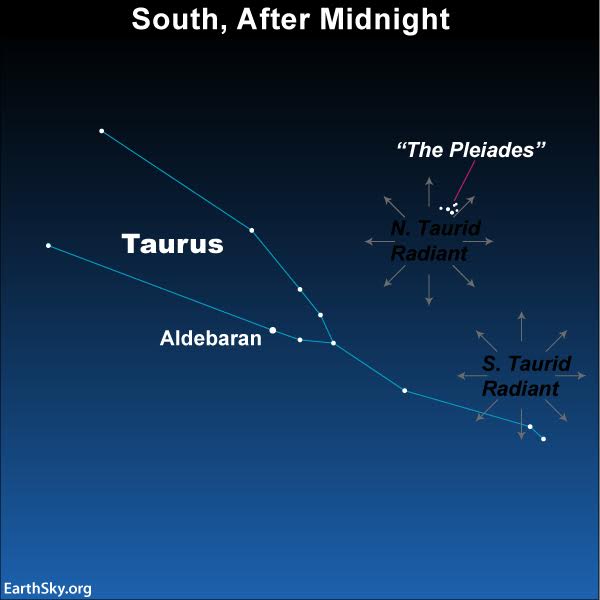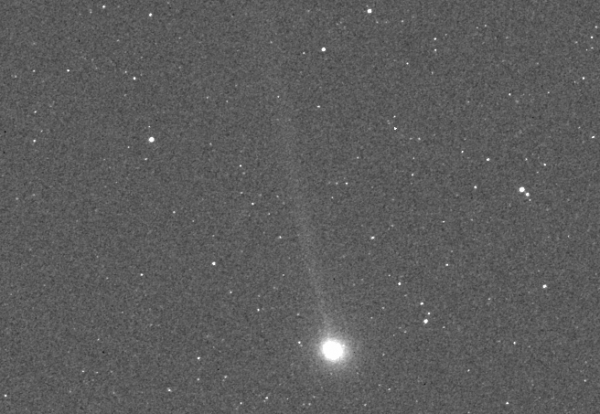
The Orionid meteor shower peaks this weekend and there are major meteor showers each month until the year’s end. Plus there are minor meteor showers worth noting, in particular the Taurids. Right now, the moon is barely past new, and you might be out there anyway, watching for Orionids. If so, just know that the Taurids are also happening … and that this shower is known for producing a large number of fireballs, or particularly bright meteors.
Like the Orionids, the best time to watch for Taurid meteors is after midnight, or when the constellation Taurus – the radiant for this shower – climbs highest up for the night. How do you find a meteor shower radiant? You do it by tracing the path of a meteor backwards in the sky, to its point of origin on our sky’s dome. In fact, the radiants for the Taurids and the Orionids are near each other on the sky’s dome. You might easily mistake a Taurid for an Orionid, or vice versa. No matter.
If it’s a really bright one, it might be a Taurid!
EarthSky’s 2018 lunar calendars are here! Get your calendars 25% OFF this week.

There are two streams of Taurid meteors – known as North Taurids and South Taurids – and both are known to produce a high percentage of fireballs, or exceptionally bright meteors. Both showers are going on now.
The American Meteor Society explains what’s awesome about the Taurids:
The Taurids (both branches) are rich in fireballs and are often responsible for increased number of fireball reports from September through November.
Two years ago, October and early November 2015, was an incredible year for the long-lasting Taurids. We received many, many photos of fireballs from watchful observers, which you can see here.
Experts were saying that the higher rates of Taurid fireballs in 2015 might have been the result of a seven-year cycle, given that the last big year for Taurid fireballs happened in 2008. Perhaps the next banner year will be in 2022.
What about this year? Will there be grand display of Taurid fireballs? Likely not, but, if you watch over several hours, you might see a fireball or two.
Even one is worth seeing!

The Taurid meteor stream consists of an extremely wide roadway of far-flung debris left behind by Comet 2P Encke. When Earth travels through this belt of comet debris, bits and pieces of Comet 2P Encke smash into the Earth’s upper atmosphere to vaporize as rather slow-moving Taurid meteors (17 miles/28 km per second).
The original Taurid meteor stream was perturbed by Jupiter into the two branches: South and North Taurids. The South Taurids, the more prominent of the two, are active from about September 25 to November 25, whereas the (overlapping) North Taurids are active from about October 20 to December 10.


Bottom line: The long-lasting South and North Taurid meteor showers produce meteors throughout October and November. Watch for them.











